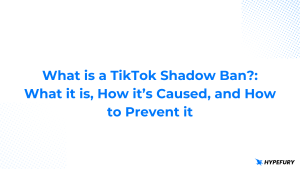LinkedIn is the fastest-growing writing platform on the Internet. It’s the latest wave for individuals and businesses looking to expand their reach and establish themselves as experts to a different audience.
Another wave that has been on the rise is the search for educational content.
With things going back to normal, and work culture evolving to suit the way top talent wants to work, many realize the need to make themselves as skilled and attractive to top recruiters as possible.
These two waves create an incredible opportunity for you to position yourself as a source of high-quality educational content. And, it can be quite profitable too.
In this article, we’ll talk about how you should engage your LinkedIn audience by offering them an online course.

Captivate your LinkedIn audience with an educational course
Sharing valuable content is the key to sustaining your online presence. But, that can get very repetitive and boring unless you create resources people can get value from without you needing to be in the mix constantly.
Online courses are the ultimate version of this.
Packaging your skills and expertise into an online course sets you apart from the average expert. In one go, it shows that you’re confident that what you know is worth something, it shows you how many in your audience truly buy into what you’re putting out, and it saves you from having to endlessly rehash topics you’ve gone over before.
It also allows you to engage your audience and get them thinking about how much you really have to offer and all the other insights you haven’t yet shared with them. And, there’s no better audience to create a course for than your LinkedIn audience.
Creating an online course for LinkedIn
LinkedIn is a platform filled with business-minded people. That means whatever course you put out, your audience will already be primed to view it as helpful for their professional life or as a stepping stone to their next level.
So, how do you make the best online course for LinkedIn?
Below are the steps you should take to create an online course for your LinkedIn audience.
Pick a topic or subject to cover
The first step when creating an online course is picking a topic or subject. Your topic should be at the intersection of what excites you and what you’re good at.
If you don’t enjoy what you’re teaching in your course, you’ll have a hard time engaging your audience and getting them to buy into the objectives of the course.
And, if you are not good at what you want to teach, your audience will view your course as a money grab and you’ll develop a reputation as a fraud.
To find the perfect topic for you, think about what you’ve built your audience on. Your audience probably wants more of the same, packaged to be super-specific and actionable for achieving their goals.
Research and gauge demand for your course topic
Before you get stuck in creating your course, find out if people want it. Nothing is more disheartening than slaving away to meet your launch target only to be met with absolute disinterest when you launch.
The easiest way to know if you should be working on a course is to presell copies of it. Many course-hosting platforms allow you to presell your course and you should use that to your advantage.
Release your course ideas and offer pre-launch copies for a discount to gauge the level of interest in it.
If you sell a lot of copies, you can safely carry on working on your course knowing people are interested. But, if you don’t sell a lot, then you know you need to work on something else, and you can simply issue refunds for the copies you sold.
Another way to know if you’ve settled on a good course topic is to see if there are any other creators offering similar courses or related content.
Don’t be afraid of a little competition, it simply means there is a healthy level of demand for the topic you want to cove. And, with the right positioning, you can carve out a section of that demand for yourself.
You can also do research for your course by polling your audience, following conversations in your niche, seeing what everyone is talking about, and by asking your audience what they’d like to learn from you.
Simply asking your audience what they want and having them tell you what they want will save you a lot of time and trouble than most other research methods.
Marketing
Marketing your course is an important part of making it successful and profitable.
Once you’re satisfied that there is enough of a market for your course, you should begin marketing it right away. Many Eduprenuers make the mistake of starting the marketing for their course just before the launch.
You should use your LinkedIn posts, newsletter issues, and even other social media platforms to keep your upcoming course top of mind for your audience by letting them know what concepts it covers, who it’s intended for, and when they can expect to get it.
Beginning your marketing long before your course is ready will help you generate hype and anticipation for a successful launch. The feedback and engagement you receive when talking about the course will also give you fresh ideas and motivate you to work purposefully on the course.
Your marketing should gradually build up as you work on your course and peak right before you launch it.
Before you start working on your course in earnest, you should outline the learning objectives for it.
Having a clear idea of what people should learn or must be able to do after going through your course will help you create valuable and actionable content.
The average student that goes through your course should be able to point out what they’ve learned or still need to learn in your course. And, your best students should be able to achieve similar results to you with their newfound knowledge or at least be on the path to doing so.
Outlining your course objectives will also help you decide how long you want the course to be, the delivery method you’ll use, and how you’ll split the course if you use a tiered pricing model.
Create the course content and material
Once you’re happy that know exactly what you’d like your students to learn, you can finally start preparing your course content.
This step can be a little daunting, but you should create as much content as you can while the inspiration is flowing. You can clean it up and make heads and tails of it in the editing process that comes next.
Depending on your delivery method, creating content might mean going through endless notes and writing one perfect paragraph at a time or it could mean setting up video equipment and putting on your own mini-production.
Whatever the case, at this stage, don’t worry too much about getting everything perfect. Simply focus on getting content out. That might mean writing more error-filled paragraphs than you’ve ever written or shooting enough takes to make you sick of hearing your own voice.
Format and edit your course
The formatting and editing stage will determine the quality of your finished product.
At this stage, you have to select what will be included in your course and what you leave out. Some of the content you worked on won’t make the final cut, but remember, what you leave out contributes to the end product just as much as what you put in.
You should aim to put in enough content to exceed expectations but not so much that you overwhelm your student and leave them confused.
Make sure to double-check and confirm that all the links and resources you provide or direct your students to are the most up-to-date and accurate information available.
As for all the content you don’t get to use, don’t get rid of it. You can always use it as complementary content, update your course with it, or make an entirely new course.
Pick a platform to host your course
Once you’ve put the finishing touches on your course, you should shift your focus to finding a platform for hosting it.
Picking the right hosting platform for your course is an important step because it will affect how well you manage everything and how easily your students access and go through their course content.
There are many different platforms you could use, including Teachable, Podia, Gumroad, Kajabi, Udemy, Thinkific, and many more. Each of them offers different benefits, and you’ll have to think about which of them is best suited to you and the delivery method of your course.
Finalize pricing model
One of the last things you’ll have to do for your course is to pick a pricing model. We recommend using a tiered pricing model because it will allow more people to buy the course. And, the tiered model is perfect if your course covers everything from introductory concepts to advanced ideas for seasoned pros.
Whatever pricing you choose for your course should reflect how much you think it’s worth in terms of the work you put into it and as an investment for the people that buy it. If it’s too cheap, people will think you don’t have confidence in what you’re selling, and if it’s too expensive, most people might find it too much of a gamble to buy it.
To set the right price, you should look at how your course compares to similar courses in your niche. Looking at similar courses will tell you how much people are willing to pay for knowledge in your niche. Once you know, you can adjust your price based on the content you cover.
And, remember, you can always change the price of course.
Launch your course
Once you’ve done all the work and you’re happy that people can dive into the course and find exactly what you promised, you can take a breath and launch your course.
If you’ve been marketing your course throughout the process of making it, you should have an audience full of people ready to buy your course.
You shouldn’t expect to rest too much once your course is live. You should be prepared to answer questions from your students and help them make the most of the course. You’ll also have to continue marketing the course.
Don’t stress yourself too much thinking you’ll never have another moment’s rest. If you’ve put together an excellent resource, your audience will gladly do the heavy lifting and spread the word about how good your course is and you can sit back and enjoy the rewards.








